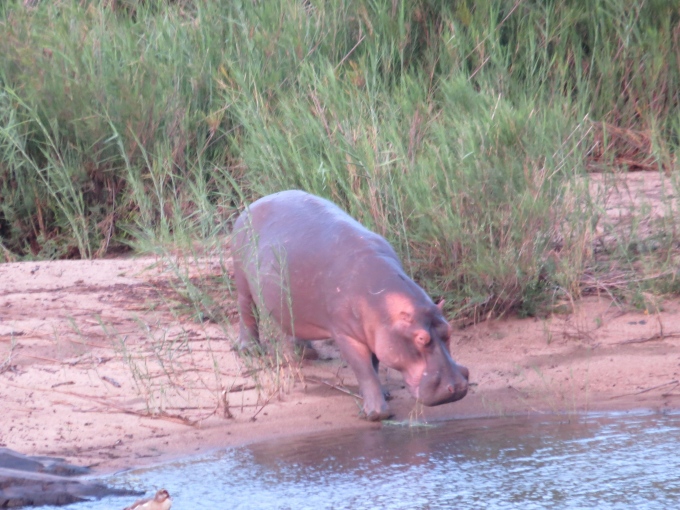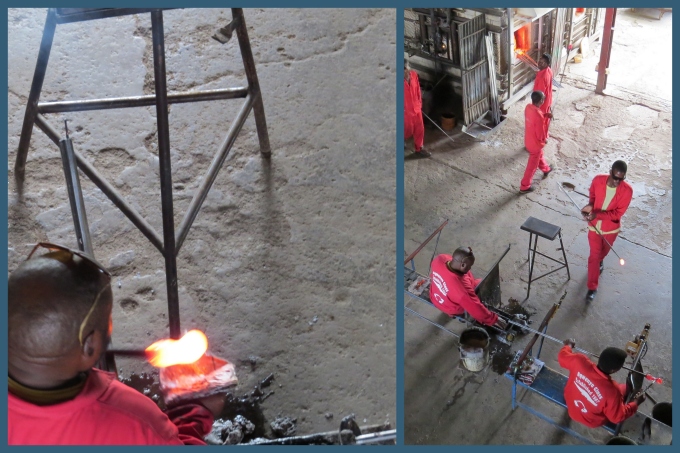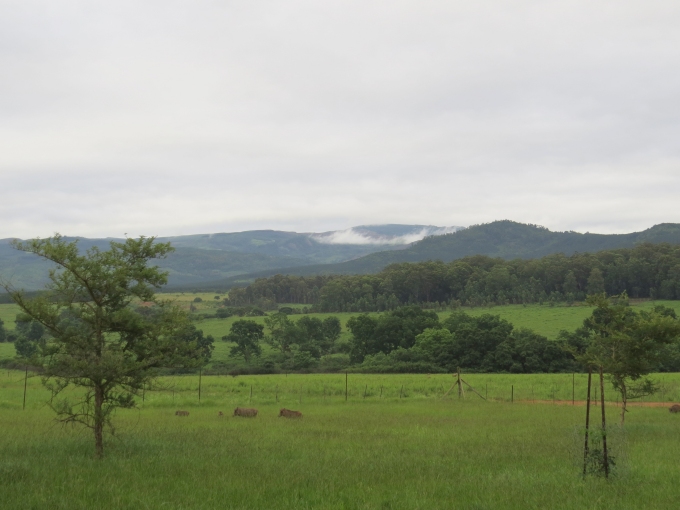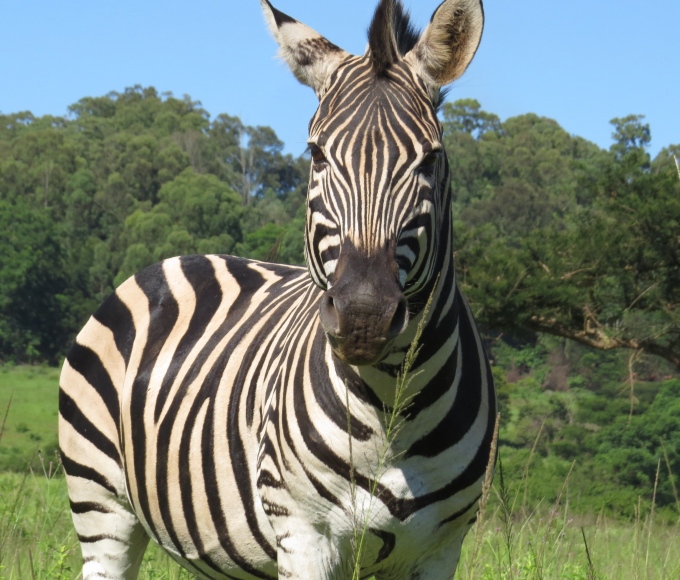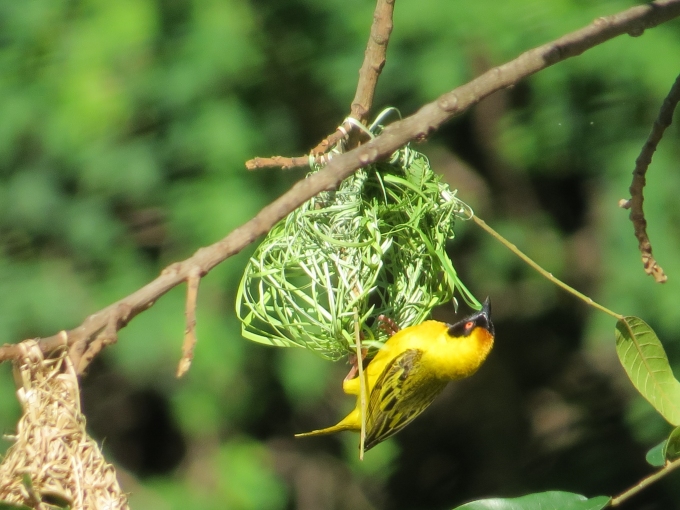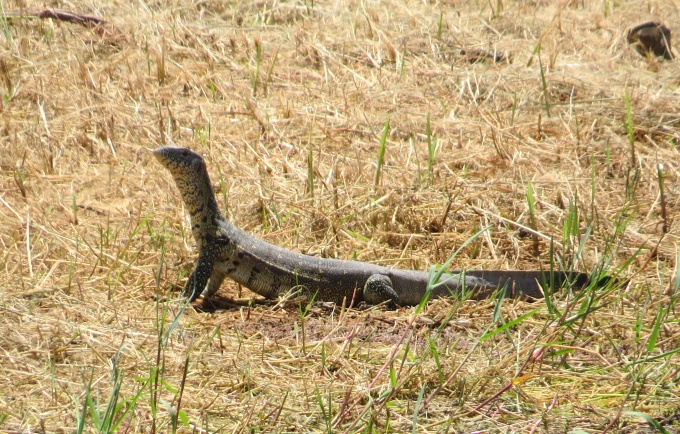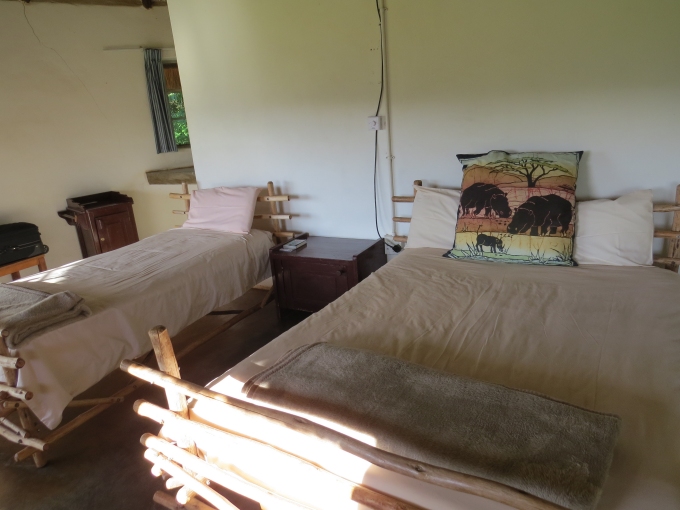Off to Kruger National Park
/Thunder and lightning and heavy rain kept us awake a good portion of the night, but the morning dawned bright and clear. We headed to the lodge restaurant for our inclusive breakfast. The forest dripped with last night's rain We could hear monkeys chattering and birds sang in chorus. A lizard eyed us as we entered the restaurant.

We stopped in Mbabane, Swaziland's capital and biggest city, for more provisions (and snacks). Swaziland is one of the smallest countries in Africa. It is no more than 200 km (120 mi) north to south and 130 km (81mi) east to west. The trip wasn't far mileage-wise, but the country roads were all of the narrow secondary and tertiary type with hills, curves, some gravel and lots of potholes and we'd learned to allow much more time for travel.
We'd heard about Ngwenya Glass from several sources and since it was pretty much on the way, we wanted to stop and check it out ( plus you know we seldom go anywhere directly). Ngwenya (siSwati for crocodile) uses recycled glass to produce beautiful new glassware. We found the little factory located off a country road. Peacocks wandered the well-manicured grounds. We were greeted warmly as we entered and allowed to watch the factory workers in action from a balcony above.
The showroom was gorgeous with way too much to choose from. There was glassware and beautiful decorative creations. We ended up with some wine glasses, a cobalt glass elephant and a fine glass pendant. Then we were off again.
The road meandered over rolling, verdant hills through any number of little towns as country roads often do. People went about their business. Kids in uniform were coming home from school. Most people don't own cars, so they either walk or take combis, little overcrowded mini-vans.
Truth be told, we had thought about giving Kruger a pass. We'd heard that it would be crowded and we conjured up images of Yosemite or the Grand Canyon or Yellowstone when the traffic is bumper to bumper during the summer. But we were so close and Kruger is so well-known for its animals, we talked each other into it. It wasn't hard.
We'd made reservations for a hut inside the park, but none were available for this night, so we chose a guest house in Komatipoort close to Kruger's Crocodile Bridge entrance and a stone's throw from the Mozambique border. Our hosts suggested the local golf club, only five minutes away, for a beer and a light supper. The club overlooked the Crocodile River and Kruger was on the opposite riverbank.
We waited out a torrential summer downpour in the car, then tromped through muddy puddles into the club. We settled at a table on the patio under cover, but close enough for a river view, and ordered a couple of Castle drafts. Many Afrikaaners live in this northern part of South Africa and the chat at the golf club was all in Afrikaans. We sipped our beers and watched the river. Much to our delight, a hippo appeared on the shore. We watched as she waddled her way into the river. And our Kruger experience began before we even entered the park.
